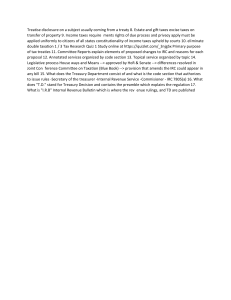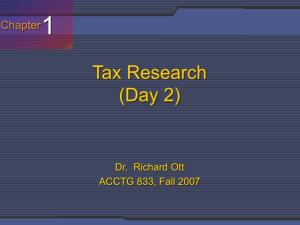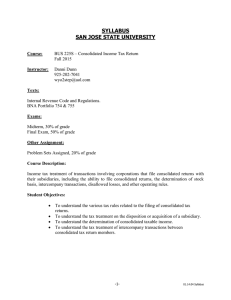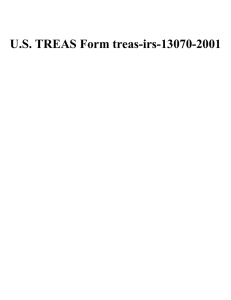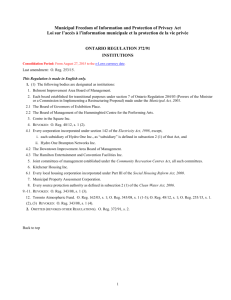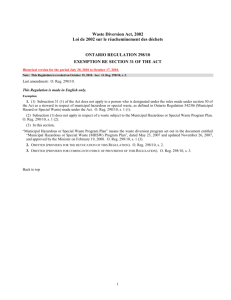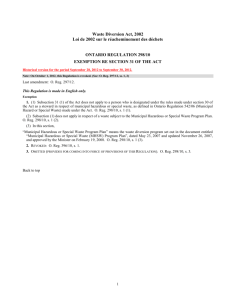Internal Revenue Code
advertisement
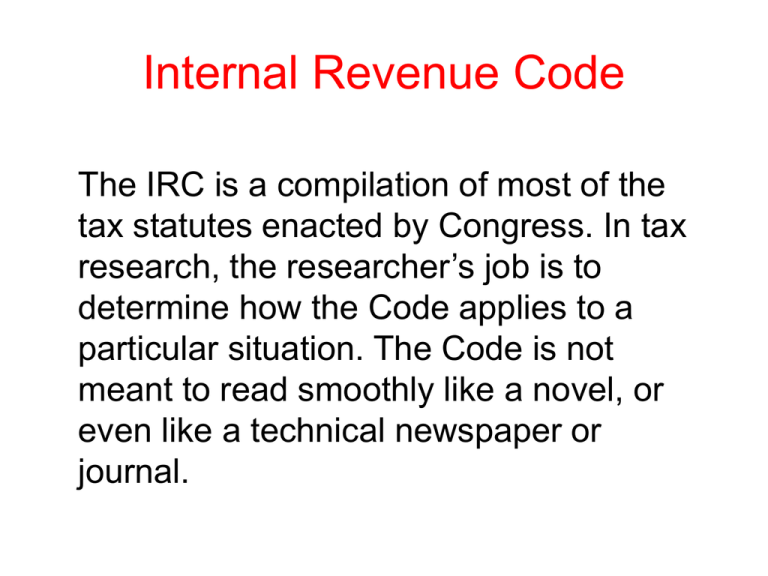
Internal Revenue Code The IRC is a compilation of most of the tax statutes enacted by Congress. In tax research, the researcher’s job is to determine how the Code applies to a particular situation. The Code is not meant to read smoothly like a novel, or even like a technical newspaper or journal. Organization of the Code • Knowledge of the organization of the Code helps a researcher to quickly and concisely research a particular topic. • The IRC is organized into many segments, starting with broad subject matter (for ex., income taxes, estate taxes, or excise taxes) and narrowing to specific Code sections within the broader segment. Organization of the Code The segments from broadest to narrowest, are: (Use Illustration from Excerpt from Table of Contents) 1. Title 2. Subtitle 3. Chapter 4. Subchapter 5. Part 6. Subpart 7. Section 8. Subsection 9. Paragraph 10. Subparagraph 11. Clause 12. Subclause How To Cite The Code • Formal : 26 USC Sec. 163 • Less formal: IRC Sec. 163 or Sec. 163 Code Treasury Regulations • Treasury Reg’s are the Treasury Dept’s primary mechanism to potentially interpret the Code. • Treasury Reg’s attempt to clarify the provisions of a particular Code section. • There are 3 types of regulations: Final, Proposed, and Temporary – Final Regulations have the full force and effect of law as long as they are “reasonable and consistent interpretations” of the Code. Therefore, final reg’s may bind both the IRS and the taxpayer. Citing the Regulation: • Most Common: Treas. Reg. §1.1625(b)(3)(ii) cites an example of the fact that education expenses that qualify an individual for a new trade or business are nondeductible. Ex. Fees for an engineer to go to law school at night are nondeductible. Qualifies for new trade. • If the Regulation is Proposed or Temporary, prior to the word Treas. add “Prop.” or “Temp.”
